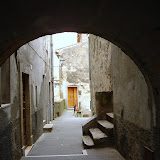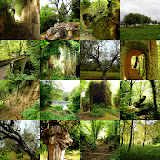
The Maremma is a pleasure for all senses. Everywhere is a scent of fragrant flowers and sweet-smelling lemon-trees, among others.
A few hours before heading for the airport my friends took me to their Olive-Grove.
I so much admire these trees, magnificient species often assembling humans with their thick branches streching out to the wind. Everyone seems to have a special personality, telling us tales of times immortal.
Let me finish my memories of Pitigliano with a picture of another mediterrenean tree, a pine tree, which I found in one of my favourite Poems, this time by a Greek, not an Italian Poet.
Giorgos Seferis:
When will you speak again?
Our words are the children of many people.
They are sown, are born like infants,
take root, are nourished with blood.
As pine trees
hold the wind's imprint
after the wind has gone, is no longer there,
so words
retain a man's imprint
after the man is gone, is no longer there
.jpg)
.jpg)
.jpg)
.jpg)









































